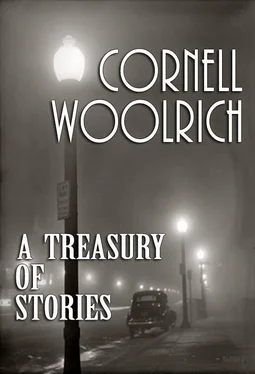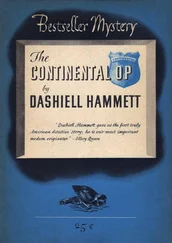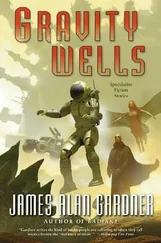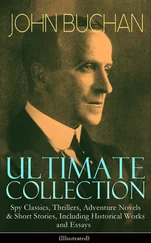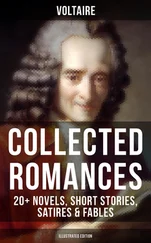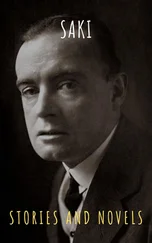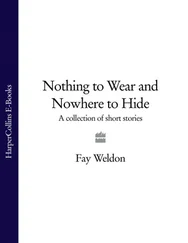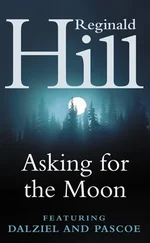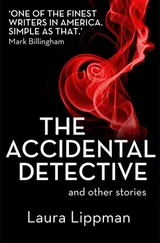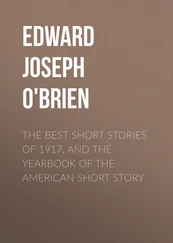“Warrant of Arrest” ( Escapade , April 1968)
“For the Rest of Her Life” ( Ellery Queen’s Mystery Magazine , May 1968)
“New York Blues” ( Ellery Queen’s Mystery Magazine , December 1970)
“Life is Weird Sometimes...” ( Nightwebs , 1971)
“The Talent” ( Saturday Evening Post , Summer 1971)
“Even God Felt the Depression” ( Blues of a Lifetime , 1991)
“The Poor Girl” ( Blues of a Lifetime , 1991)
SHORT FICTION COLLECTIONS
As Cornell Woolrich
Nightmare (1956)
Violence (1958)
Hotel Room (1958)
Beyond the Night (1959)
The Dark Side of Love (1964)
The Ten Faces of Cornell Woolrich (1965)
Nightwebs (1971)
Angels of Darkness (1978)
The Fantastic Stories of Cornell Woolrich (1981)
Darkness at Dawn (1985)
Vampire’s Honeymoon (1985)
Blind Date with Death (1985)
Night and Fear (1995)
Tonight, Somewhere in New York (2005)
Love and Night: Unknown Stories (2007)
Four Novellas of Fear (2010)
As William Irish
I Wouldn’t Be in Your Shoes (1943)
After Dinner Story (1944)
If I Should Die Before I Wake (1946)
Borrowed Crime (1946)
The Dancing Detective (1946)
Dead Man Blues (1948)
The Blue Ribbon (1949)
Six Nights of Mystery (1950)
Eyes That Watch You (1952)
Bluebeard’s Seventh Wife (1952)
NOVELS
As Cornell Woolrich
Cover Charge (1926)
Children of the Ritz (1927)
Times Square (1929)
A Young Man’s Heart (1930)
The Time of Her Life (1931)
Manhattan Love Song (1932)
The Bride Wore Black (1940)
The Black Curtain (1941)
Black Alibi (1942)
The Black Angel (1943) [based on his 1935 story “Murder in Wax”]
The Black Path of Fear (1944)
Rendezvous in Black (1948)
Savage Bride (1950)
You’ll Never See Me Again (1951)
Hotel Room (1958)
Death is My Dancing Partner (1959)
The Doom Stone (1960) [previously serialized in Argosy, 1939]
Tokyo 1941 (1960)
Into the Night (1987) [manuscript completed by Lawrence Block]
As William Irish
Marihuana (1941)
Phantom Lady (1942)
After Dinner Story (1944)
Deadline at Dawn (1944)
Waltz into Darkness (1947)
I Married a Dead Man (1948)
Strangler’s Serenade (1951)
As George Hopley
Night Has a Thousand Eyes (1945)
Fright (1950)
Films Based on Woolrich works
Convicted (1938) (story Face Work)
Street of Chance (1942) (novel The Black Curtain)
The Leopard Man (1943) (novel Black Alibi)
Phantom Lady (1944) (novel)
The Mark of the Whistler (1944) (story Dormant Account)
Deadline at Dawn (1946) (novel)
Black Angel (1946) (novel)
The Chase (1946) (novel The Black Path of Fear)
Fall Guy (1947) (story Cocaine)
The Guilty (1947) (story He Looked Like Murder)
Fear in the Night (1947) (story Nightmare)
The Return of the Whistler (1948) (story All at Once, No Alice)
I Wouldn’t Be in Your Shoes (1948) (story)
Night Has a Thousand Eyes (1948) (novel)
The Window (1949) (story The Boy Cried Murder)
No Man of Her Own (1950) (novel I Married a Dead Man)
El Pendiente (1951) (story The Death Stone)
Si muero antes de despertar (1952) (story If I Should Die Before I Wake)
No abras nunca esa puerta (1952)
(stories: Somebody on the Phone/Humming Bird Comes Home)
Rear Window (1954) (story It Had to Be Murder)
Rear Window (1998) (story It Had to Be Murder)
Obsession (1954) (story Silent as the Grave)
Nightmare (1956) (story)
The Bride Wore Black (1968) (novel)
Mississippi Mermaid (1969) (novel Waltz Into Darkness)
Kati Patang (1970) (novel I Married a Dead Man)
Seven Blood-Stained Orchids (1972) (novel Rendezvous in Black)
Union City (1980) (story The Corpse Next Door)
I Married a Shadow (1983) (novel I Married a Dead Man)
Cloak & Dagger (1984) (story The Boy Who Cried Murder)
Mrs. Winterbourne (1996) (story I Married a Dead Man)
Original Sin (2001) (novel Waltz Into Darkness)
Four O’Clock (2006) (story Three O’Clock)
Wally Walters had been told more than once that he was a cake eater. Now a cake eater is one who having arrived at years of discretion toils not neither does he spin. In other words he lets the bread and butter of life go by him and concentrates on the cake — sugar icing and all. How he gets away with it is nobody’s business. But Wally Walters, in particular, wore a three-cornered, low-crowned hat down over his eyes and nose with a little green feather stuck in the band. Being unable to fasten a bow-tie himself, he wore his on a rubber band under the collar of his shirt. It looked just as good anyway. His trousers hung about his legs in folds; they extended to the tips of his shoes, and when he walked he looked elephant-footed. The funniest thing about him, though, was his raincoat. When it rained, and sometimes even when it didn’t rain, Wally came out in a soapy looking yellow slicker with a little strap around his throat like a dog-collar. On his back he had a drawing of a bobbed-haired flapper in a pink chemise and black silk stockings, and underneath was the legend “Ain’t we got fun” for all the townspeople to marvel at. The blonde cashier at the candy store had done it for him. She had also done some six or eight others. All the boys told her she had a great deal of talent going to waste. She agreed with them.
It is only fair to mention in passing that although Wally Walters was undeniably a cake eater, he never touched cake, or pie either for that matter. He dined in cafeterias whenever he did dine, which wasn’t as often as it sounds, and he ate things like ham sandwiches and custards because they cost less and were far more substantial. Several evenings a week he devoted to billiards, but on Saturday nights he was always to be found at the Rainbow, the local dance center, where they took the precaution of searching you for liquor as you went in. Some of the brighter ones got around this by carrying it internally. On Saturday nights Myrtle and Rose and Lily were always to be found there, outdoing one another in the grotesqueries of the Charleston. All that was needed was plenty of room, a pair of strong ankles, and lots of terpsichorean ambition; and these were the very things that Wally Walters seemed to have most of. Consequently he was a howling success and always in demand — as Rose and Myrtle and Lily thought that the cleverest Charleston contortionist was bound to make an ideal husband, in which case they wouldn’t have to go out any more but could do their practicing right at home.
But not for Wally. He knew too much about girls. Girls were a necessary evil, nice under Japanese lanterns at twelve o’clock with all their bagatelles and war-paint on, but not so nice at nine the next morning over the cereal and the coffee pot. Wally was an idealist. He had dreams and he hated to see them spoilt. He got a little older and he got a little older and finally he put his trust in one girl and one girl only, a girl in a castle of dreams.
There was Carfare Connie. They called her that because she would ride in anything from a limousine to a mail truck, but she always took along about a dollar and a half for spending money. She called it her emergency fund. She’d had the same dollar and a half for three years now and still her luck kept up. She used to read the motto engraved on the silver half dollar, “In God We Trust,” and smile knowingly to herself, and perhaps rub it on her sleeves to brighten it up a bit. Carfare Connie hadn’t had any trouble on automobile rides — much — but she believed in being prepared. Every Saturday night she put on a big floppy white picture hat which was nothing but wire and gauze and wended her merry way to the Rainbow, greeting all passers-by en route. She was very fond of Wally Walters. He and she would invent dance steps together.
Читать дальше
